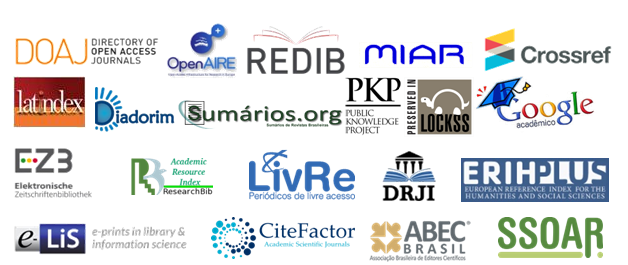Ionic Liquids (ILs) applied to obtain nanocellulose: a review
DOI:
https://doi.org/10.20873/driuft.v9i1.11423Abstract
Ionic Liquids (ILs) are considered "green" solvents. They are used for a number of purposes in the field of science, among them more recently, the pre-treatment of lignocellulosic biomass. The description as an ecological solvent is due to the low vapor pressures and combustibility, besides being easily recovered and reused, they have received a lot of attention in recent years for representing an alternative to conventional solvents. Thus, the application of several ILs to obtain cellulose nanocrystals has been proposed due to the ability to remove amorphous regions such as hemicellulose and lignin, in order to maintain the crystalline regions of the chain. Nanocellulose, in turn, has attracted growing scientific and technological interest due to the great potential for use in areas such as biomedicine, cosmetics and materials industry, for example. Therefore, this article aims to review ionic liquids capable of producing cellulose at the nanoscale. The research was conducted by searching for publications carried out between the years 2015 and 2020 that highlight the most promising ILs for obtaining nanocellulose. The most studied LIs for this application are those derived from imidazolium, however, other types have shown to be effective in this process.
Keywords: nanocellulose, Ionic Liquids, biomass.
Downloads
Published
How to Cite
Issue
Section
License
Copyright (c) 2022 Fabiane Fernandes da Silva

This work is licensed under a Creative Commons Attribution-NonCommercial 4.0 International License.
Autores que publicam nesta revista concordam com os seguintes termos:
1. Autores mantém os direitos autorais e concedem à revista o direito de primeira publicação, com o trabalho simultaneamente licenciado sob a Creative Commons Attribution License (CC BY-NC 4.0), permitindo o compartilhamento do trabalho com reconhecimento da autoria do trabalho e publicação inicial nesta revista.
2. Autores têm autorização para assumir contratos adicionais separadamente, para distribuição não-exclusiva da versão do trabalho publicada nesta revista (ex.: publicar em repositório institucional ou como capítulo de livro), com reconhecimento de autoria e publicação inicial nesta revista.
3. Autores têm permissão e são estimulados a publicar e distribuir seu trabalho online (ex.: em repositórios institucionais ou na sua página pessoal) a qualquer ponto posterior ao processo editorial.
4. Além disso, o AUTOR é informado e consente com a revista que, portanto, seu artigo pode ser incorporado pela DESAFIOS em bases e sistemas de informação científica existentes (indexadores e bancos de dados atuais) ou a existir no futuro (indexadores e bancos de dados futuros), nas condições definidas por este último em todos os momentos, que envolverá, pelo menos, a possibilidade de que os titulares desses bancos de dados possam executar as seguintes ações sobre o artigo:
a. Reproduzir, transmitir e distribuir o artigo, no todo ou em parte sob qualquer forma ou meio de transmissão eletrônica existente ou desenvolvida no futuro, incluindo a transmissão eletrônica para fins de pesquisa, visualização e impressão;
b. Reproduzir e distribuir, no todo ou em parte, o artigo na impressão.
c. Capacidade de traduzir certas partes do artigo.
d. Extrair figuras, tabelas, ilustrações e outros objetos gráficos e capturar metadados, legendas e artigo relacionado para fins de pesquisa, visualização e impressão.
e. Transmissão, distribuição e reprodução por agentes ou autorizada pelos proprietários de distribuidoras de bases de dados.
f. A preparação de citações bibliográficas, sumários e índices e referências de captura relacionados de partes selecionadas do artigo.
g. Digitalizar e / ou armazenar imagens e texto de artigo eletrônico.

